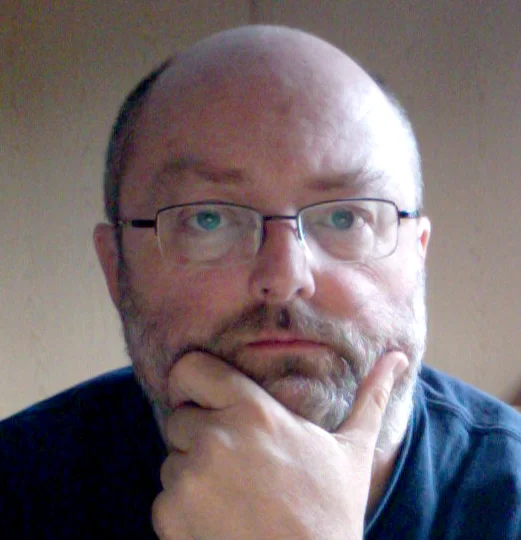Interview with David MacKenzie
/How did you get started in the boardgame industry?
I grew up playing Monopoly, Risk, Life, Careers, and Battleship; and I have a vague memory of playing Dark Tower, that board game with the electronic tower in the middle of the board. My first “game design” experience was making rules changes to Risk. I invented what I called “Nuclear Risk” where if the defender rolled double 6s, a card would be drawn from the country deck and that country would lose all its armies. If the attacker rolled triple 6s, a card would be drawn from the deck and removed from the game, the country would lose all its armies, and a marker would be placed on the map indicating that the country was a nuclear wasteland and no one could ever control it or even pass through it. For a kid, I was very proud of that. Now there really is a Nuclear Risk game, though I don’t know how it plays.
My gaming languished after college, but my brother, Fred, introduced me to Settlers of Catan in 2008 and I was hooked all over again. Catan, Carcassonne, Flux, and Killer Bunnies were staples at our family gatherings and then Fred and I starting making up our own games, and that lead me to believing I could actually publish board games. Quite a leap, really, considering it was not like anything I’d ever done before. The real turning point was when a friend of my brother (I think Fred must be responsible for everything game-related in my life) brought a game idea to me that he called “Alien Frontiers”. Look it up. AF was the start of a HUGE change in the whole game publishing industry – have you ever heard of Kickstarter?
Do you prefer game design or game development? Why?
I prefer game development. Game design is HARD! With Development, someone else has already built the skeleton and it’s my job to put flesh on the bones and bring it to life. Much easier.
What’s your favorite part about project management and development? Least favorite?
I don’t think there is a favorite part about project management. It’s a million different things that can go wrong, at the worst times, and with the worst effects. I have to try to keep it all flowing as smoothly as possible and get it back on the rails when it inevitably jumps the track. It doesn’t help that I’m getting old and feeble-minded. I guess all of that is what is least favorite, so I guess what’s most favorite would be the absence of all that.
How did Sailing Towards Osiris come to be?
STO is my baby. I designed it early in 2011 and brought the first prototype to Origins that summer for its very first play. The victims of that event, Chris Kirkman, John Moller, and a third person I can’t recall (T C Petty III or maybe Shawn Purcell?) were really supportive and liked the game a lot. I came away with some ideas to make improvements, and I toyed with the design for a few more months, and then shelved the project so I could work on new things like Sunrise City and King’s Forge. Six years passed before I blew off the dust, got into some serious playtesting, and finally finished it up for the world to play.
What is your favorite mechanic or system in Sailing Towards Osiris?
My initial goal with STO was to make a game where doing the thing that earns you points made it harder to do that thing. So many games are about engine-building, where the more you do the thing, the easier the thing gets. I wanted to flip that around and make you worker harder to get what you needed to win. So, the answer is, the fact that the monuments you build block the very spaces you need to get the resources to build the monuments. This keeps you working to puzzle out alternate ways to obtain the resources to get the jobs done.
What does the Pharaoh's Pyramid expansion add or change about Sailing Towards Osiris?
The biggest thing it adds is the Pyramid which players have to build together. No one has enough blocks to get the job done on their own, and if it doesn’t get completed the left over blocks decrease your score. That seems easy enough, but while you’re spending time and resources to work on the pyramid, someone else is using that time to get ahead with monuments on the main board. It becomes a balancing act where you need to divide your attention between a group goal and a personal goal.
Because resources can already be tight in STO, the new deben currency was introduced as a buffer. Debens can only be used when planning monuments or blocks, but they give you enough flexibility to accomplish both group and personal goals if you work at it.
Did you design Pharaoh's Pyramid at the same time as the base game? Is that typical for you?
Nope. I never really had any plans for an expansion beyond Governors & Envoys. The idea for Pharaoh’s Pyramid came from my business partner, Isaias Vallejo (Valeria: Card Kingdoms, Chocolatiers, and many more). As I mentioned before, game design is HARD and I like development better. So, we took his idea and developed it into this new expansion together.
Any advice or words of wisdom for aspiring designers or developers?
For Designers…never stop thinking up new ideas and new riffs on existing ideas. It amazes me how the industry has plowed though the last 10 years with hundreds and hundreds of new games every year. Designers are so creative!
For Developers…Prototype, Playtest, Get Feedback, Adjust…repeat this over and over and over until the only feedback you’re getting is that persistent typo you can’t seem to squash. Playtesters are your single most important resource. Listen to them, even if their comments seem weird or off topic. You don’t have to implement every idea they have, but their tone and intent will also shape the direction of your project.

